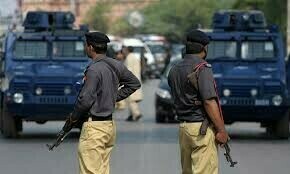
BELGRADE: A quarter-century has elapsed since Yugoslavia began its bloody collapse but students and teachers say that when it comes to recounting the conflict, history books are brief and biased.
During the war-torn 1990s, the Yugoslav federation broke apart — and the nationalism and ethnic tensions that drove the violence remain imprinted in textbooks today, they say.
“The war is glossed over in a couple of pages and you cannot really know exactly what happened and how,” complained Andjela Babovic, an 18-year-old who has just finished school in Belgrade, the capital of Serbia.
Babovic has discussed the issue with peers in Zagreb and Sarajevo, the capitals of Croatia and Bosnia respectively.
None of them got the “full story” of events, for each country presented its own condensed — and often honeyed — version of the past, she said.
“We all get half-stories,” Babovic said.
Forged by Tito in the wake of World War II, communist Yugoslavia began to crumble after two of its six republics, Slovenia and Croatia, proclaimed independence in 1991.
The move triggered a series of inter-ethnic wars that claimed 130,000 lives and left millions of people homeless.
Depending on where students live today in the ex-federation, the narrative they learn can be strikingly different.
One example is Operation Storm, the last major offensive in Croatia’s independence war.
It saw Croatian forces seize back a key area held by Serb rebels and practically ended the conflict.
But many Serb civilians, including many elderly, were killed in the aftermath — 667, according to the Croatian Helsinki Committee but 2,500 according to the Serbian government.
In Croatia, teenagers are taught about Operation Storm as a “liberation of [Serb] occupied territory”, but Serbian textbooks describe it as the “planned ethnic cleansing” of Serbs, said Babovic.
Hrvoje Klasic, a history professor at Zagreb University, said he could not imagine a Croatian school discussion on the operation that would mention that more than 200,000 Serbs were forced to flee.
“Textbooks do not encourage such discussion,” he said, explaining that the educational focus was on fact-learning rather than debate.
‘War-time ideologies’
Dubravka Stojanovic, a Belgrade University history professor, said the consequence of this was worrying.
One-sided curricula are shaping younger generations’ views of the wars “with positions remaining unchanged and irreconcilable,” she said.
“Most textbooks and history lessons in all these countries today retain all of the arguments used by war-time ideologies for triggering conflict.”
The situation in Bosnia is even more complicated. The republic has remained deeply divided along the ethnic lines of the three communities that were at war: Muslims, Croats and Serbs.
The splits are mirrored in their textbooks, according to teachers and academics in the country.
“Regardless of attempts to have a shared gist [of what happened], we still have different interpretations,” said Sarajevo history teacher Elmira Memic.
Each community’s textbooks “gloss over some important events and emphasise those that serve to embellish their own national histories,” wrote Vera Katz, a senior researcher at Sarajevo University, in a Transitional Justice paper last year.
As debates continue over who caused the state’s collapse, each curriculum is quick to apportion blame elsewhere.
One Serbian textbook says the federation fell apart because Serbia’s “right to be equal with other Yugoslav republics was disputed” by Croatia and Slovenia.
But a Bosnian book blames Serbia, saying its “aspiration to dominate Yugoslavia” led to the final split, and in Slovenia students learn that the disputes were “mostly provoked by Serbs”.
‘Emptiness in knowledge’
In Kosovo, the textbook for 15-year-olds “very simply and without any analysis of causes explains that the former Yugoslavia fell apart and that several states emerged out of it,” said Merita Osmani, a primary school history teacher in Pristina.
“Emptiness in the textbook causes emptiness in students’ knowledge about this period,” Osmani said, adding that her pupils “learn more about Asia” than this crucial episode of their own history.
Asked who caused the collapse of the federation and why, Babovic in Belgrade drew her own conclusion that European countries, Nato and the United States were to blame.
That analysis is rejected by the West, which in its view strived mightily to maintain a balance between upholding human rights and self-determination.
“They saw that Yugoslavia could become a great power and a threat in this part of the world,” said Babovic. “Therefore they started the war.”
Published in Dawn, August 12th, 2016














































